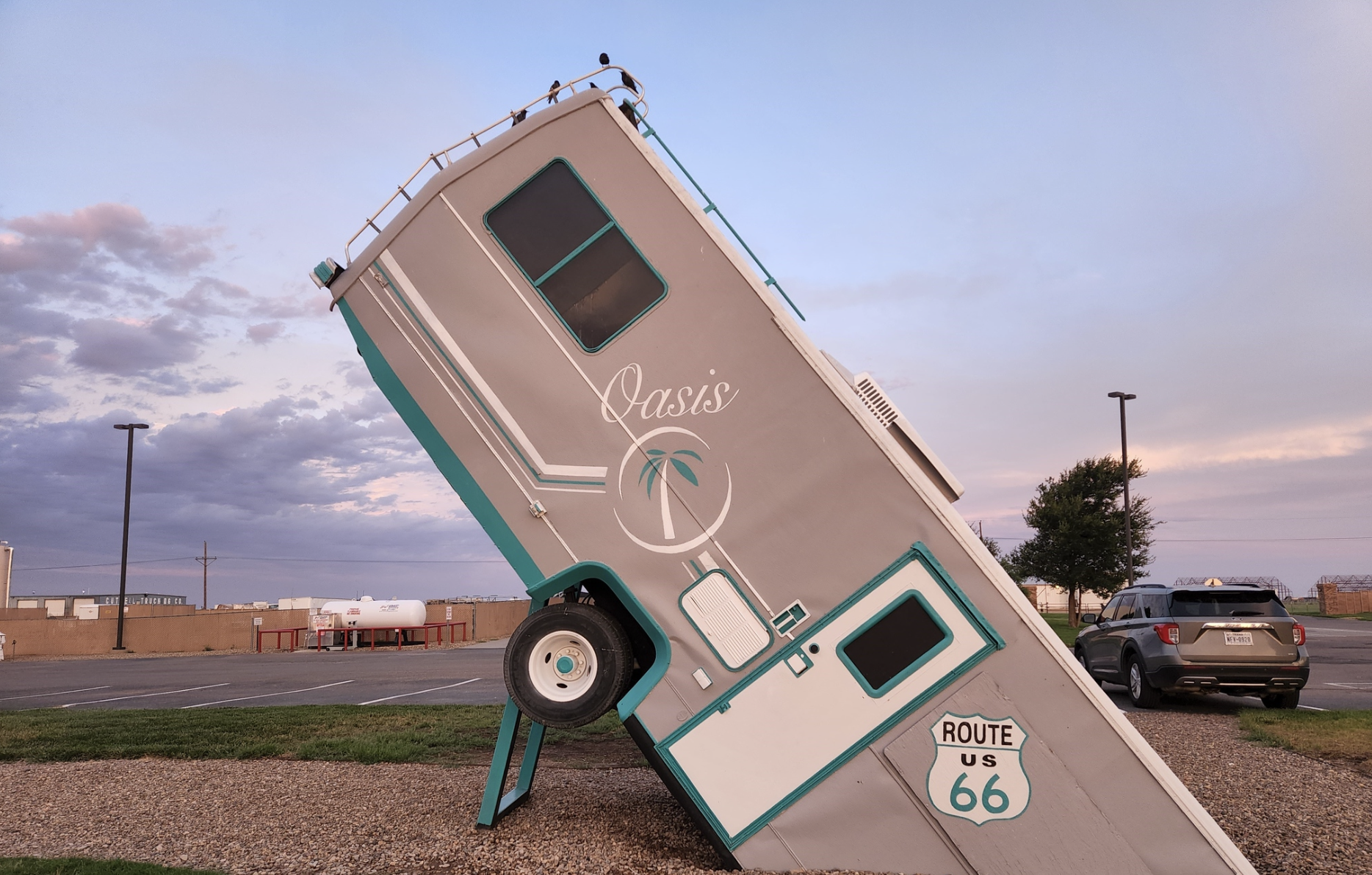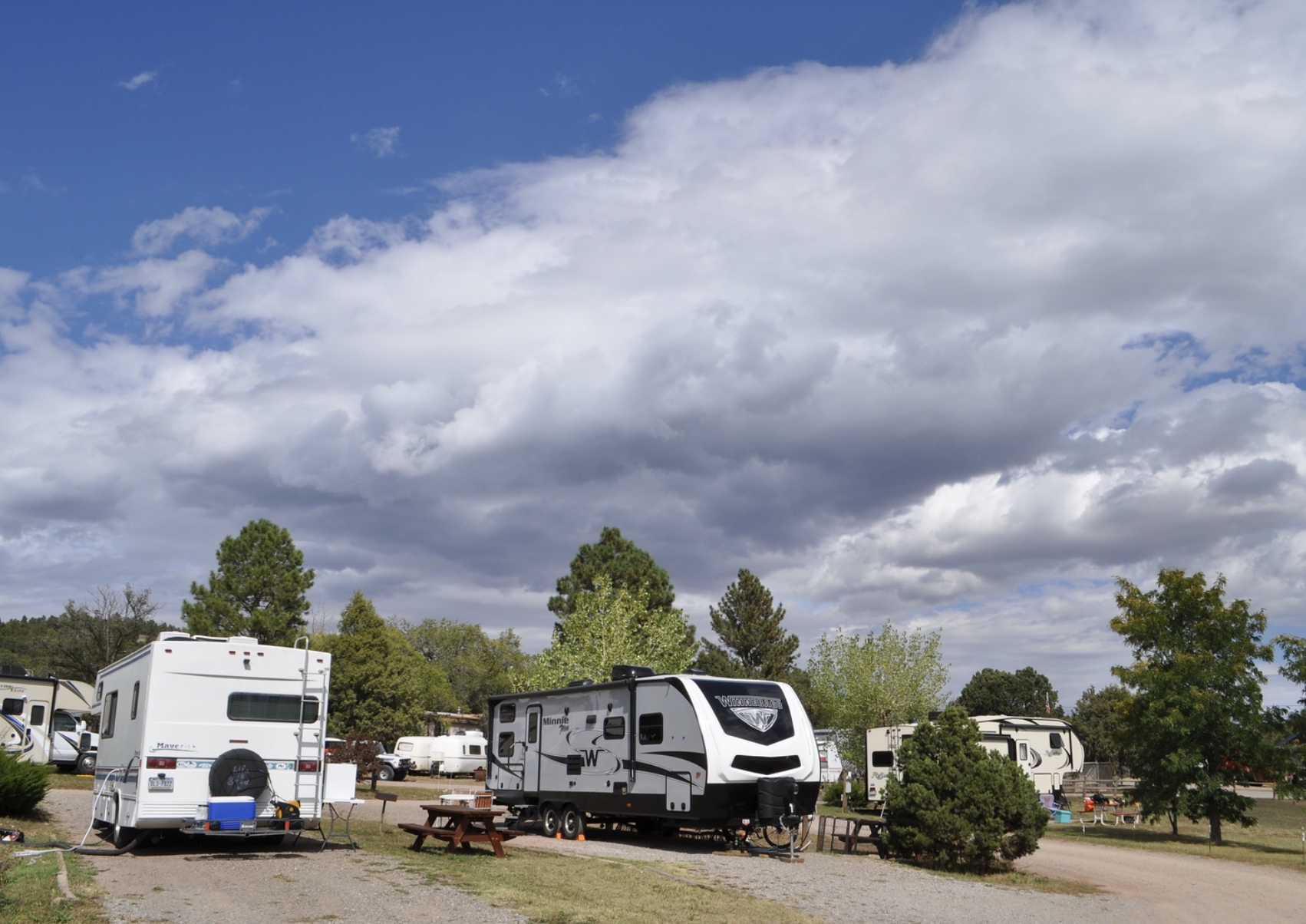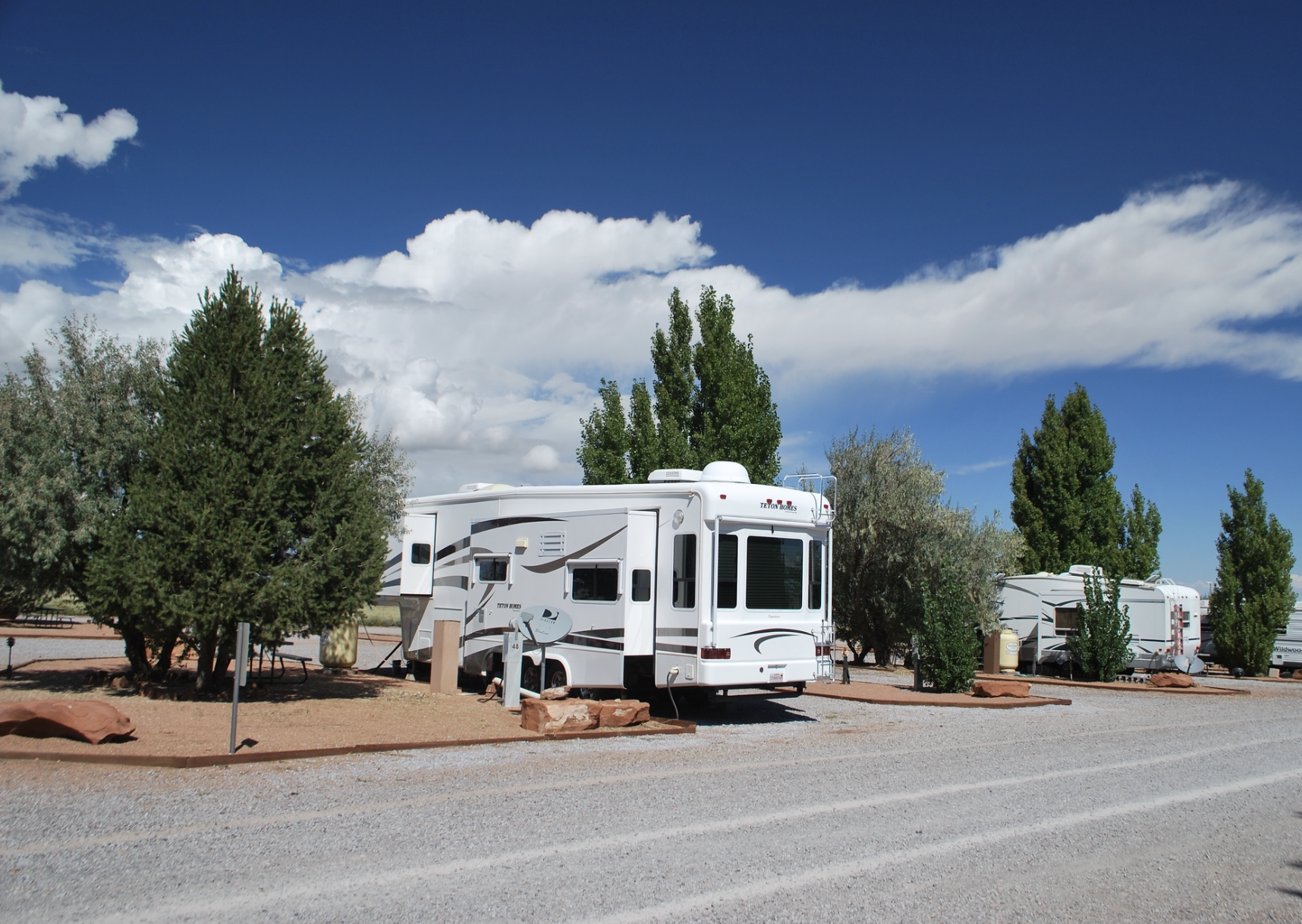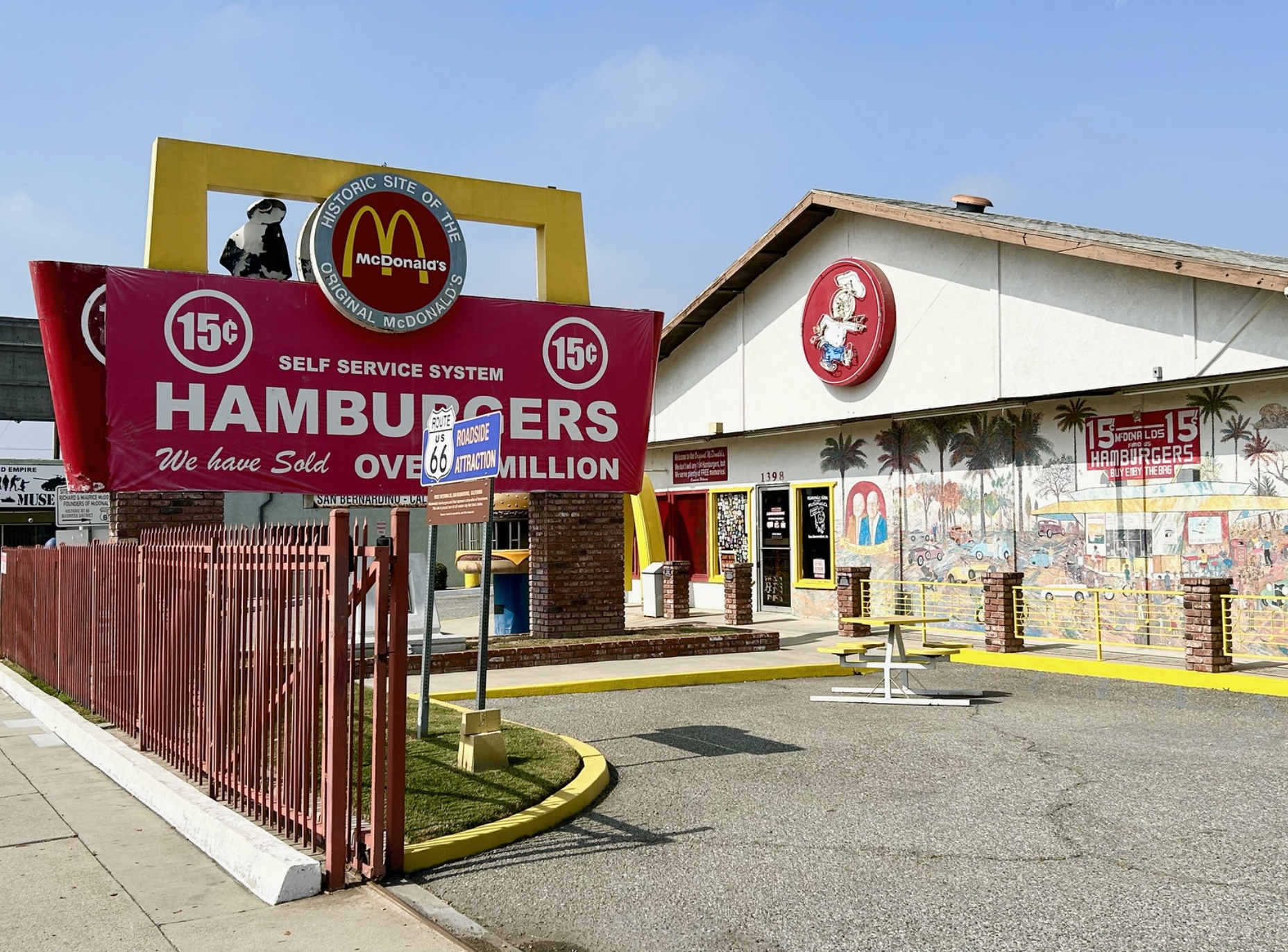The 1,095-mile stretch of Route 66 from Amarillo, Texas to Santa Monica, California not only offers RVers opportunities to see iconic landmarks, but a convenient jumping off place for interesting side trips. RVers tracing Route 66 can explore everything from Native American and Spanish history to scenic wonders, including the Palo Duro Canyon in the Texas Panhandle, the second largest canyon in the United States.
While the original Route 66 still exists in many areas of the country, most of the route has either replaced by new Interstates, highways or roads with other names that either overlap or parallel the original highway. But there are plenty of Route 66 guides available to help you find the original route, wherever you happen to be.
The good news for RVers is that there are also plenty of campgrounds and RV parks close to the original Route 66.
Following is a sampling of attractions along and near Route 66 from Amarillo, Texas to Santa Monica, California, with suggestions on nearby places to camp. We provide similar sightseeing and camping suggestions in a separate post, highlighting Route 66 attractions between Dwight, IL, and Oklahoma, which you can access here.
TEXAS
Amarillo
ATTRACTIONS
- Cadillac Ranch, Amarillo: Cadillac Ranch was erected in 1974 by a group of art hippies from San Francisco with backing from Amarillo billionaire Stanley Marsh III, who wanted to create a form of public art that would baffle the locals. The ranch got its start with 10 Cadillacs that were driven into one of Marsh’s fields. Each vehicle was tipped up and half buried, with its nose submerged in the dirt. The idea was to showcase the vehicles’ tail fins. “The Cadillacs have now been in the ground as art longer than they were on the road as cars,” according to RoadsideAmerica.com.
- The Big Texan Restaurant: Located in Amarillo, this restaurant is famous for its 72-ounce steaks, which it will serve free of charge. There’s just one catch: You have to eat it with all the trimmings in less than an hour. Located along historic Route 66, now I-40, the Big Texan Steak Ranch has a huge menu ranging from steaks, burgers and chicken to “Mountain Oysters.”
- Palo Duro Canyon State Park and Caprock Canyons State Park and Trailway: Some of the most pristine nature in Texas is located in and around these two parks in the Palo Duro Canyon area, which are located roughly 30 and 100 miles south of Amarillo, respectively.
- Nearby campgrounds include:
CAMPGROUNDS

NEW MEXICO
Albuquerque
ATTRACTIONS
- The New Mexico Route 66 Museum in Tucumcari: This museum focuses on Route 66 history in the Land of Enchantment. The museum includes an audio-visual presentation, photos, a vintage diner display with a Rock-Ola juke box, gas pumps, porcelain signs, memorabilia and several classic automobiles, including a 1929 Ford Model A Sedan, 1931 Ford Model A Coupe, 1937 Studabaker President, 1956 Mercury Montclair, 1963 Studabaker GT, and a 1975 Plymouth Fury.
- Nearby campgrounds include:
- The "Singing Road" near Tijeras, New Mexico: Specially engineered rumble strips have been placed along a quarter-mile section of Route 66 near Tijeras to mimic the sound of “America the Beautiful.” But there’s a trick. Drivers have to be going exactly 45 miles per hour (the posted speed limit) to hear the song. The Singing Road was installed in 2014 as a joint project with the New Mexico Department of Transportation and the National Geographic Channel. Their objective: to get drivers to slow down!
- Suggested Base Camp:
While Albuquerque is famous for its annual International Balloon Fiesta, Oct. 5-13, that’s just one of many things to see and do in northern New Mexico in fall. In fact, the Land of Enchantment offers RV enthusiasts numerous scenic, historic and cultural attractions, starting with Albuquerque itself. These include:
- Sandia Peak Aerial Tramway, which affords spectacular views of Albuquerque and surrounding areas. Some people hike the 7.5-mile La Luz Trail to the 10,378-foot summit of Sandia Peak, then ride the tram down.
- Old Town Albuquerque, a national historic site founded in 1706 that features over 150 boutique stores, restaurants, and world-class museums.
- The Albuquerque Museum of Art and History, which features over 35,000 artifacts, including Native American textiles, Hispanic religious art, and Route 66 memorabilia.
- The Indian Pueblo Cultural Center, which contains murals and other Native arts and artifacts, a library, archives, an education department, a teaching kitchen/restaurant, and cultural programming and events – each celebrating the Pueblo culture of New Mexico
- Casa Flamenca, a nonprofit arts center dedicated to preserving the roots, artistry and soul of flamenco dancing. Since its founding in 2010, Casa Flamenca has produced original, world-class artists in the flamenco arts in addition to offering workshops and performances throughout the year.
CAMPGROUNDS
- Albuquerque KOA Journey in Albuquerque
- American RV Resort in Albuquerque
- Turquoise Trail Campground and RV Park in Cedar Crest

ARIZONA
Winslow
ATTRACTIONS
- Standin' on the Corner in Winslow, Arizona: Thousands of people each year stop in Winslow each year to see the town and the corner made famous with the Eagles’ first single, “Take it Easy,” written by Jackson Brown and Glenn Frey and released on May 1, 1972.
- Meteor Crater, near Winslow, Arizona: This is the considered to be the best preserved meteorite impact site in the world. The crater is nearly one mile across, 2.4 miles in circumference and 550 feet deep. The park is about 30 minutes east of Flagstaff.
CAMPGROUNDS
- Campgrounds that can serve as base camps for trips to Winslow include:
Flagstaff
ATTRACTIONS
- Lowell Observatory in Flagstaff: A national historic landmark, this is one of the oldest observatories in the United States. Research conducted at this observatory had led to several important discoveries, including the realization that the universe is expanding; the discovery of the planet Pluto in 1930; the co-discovery of the rings of Uranus in 1977; the discovery of periodic variations in the brightness of Halley’s Comet; and the first detection of water in the atmosphere of an extrasolar planet. The observatory has nighttime sessions scheduled throughout the summer where visitors can meet an astronomer, ask questions and see real-time video images of planets, stars, galaxies and other celestial objects. Daytime tours are also available as well as opportunities to view the sun with special equipment.
- Museum of Northern Arizona in Flagstaff: This museum’s award-winning, permanent anthropology exhibit documents 12,000 years of Native American tribal life on the Colorado Plateau. The Hopi, Navajo and Zuni are among the tribes featured. The museum also has annual two-day festivals that feature the music, dance and artwork of Native American tribes as well as other special events. One significant early summer event is a Heritage Festival, which features traditional dances, music and talks involving the Acoma, Apache, Diné (Navajo), Havasupai, Hopi, Hualapai, Pai, Ute, Yavapai, and Zuni people.
- Petrified Forest National Park: While best known for its petrified wood, the park also has a significant collection of pre-Colombian Indian petroglyphs, which feature numerous human and animal forms. The park also has a 600-to 700-year-old Anasazi pueblo village containing over 100 rooms and kivas. Fossils have also been discovered in the park, which date back nearly 200 million years.
- Riordan Museum in Flagstaff: Timothy and Michael Riordan developed the Arizona Lumber and Timber Company and used the railroad to market their lumber. Their family’s 13,000-square foot mansion, built in 1904 in the Arts and Crafts style, is now a museum. The house is fully furnished with original Riordan family furnishings, including Harvey Ellis furniture and the family’s original dishes. Historical lectures are also regularly scheduled.
- Sunset Crater at Volcano National Monument: This park, located roughly 30 minutes from Flagstaff, features a crater created by the eruption of a volcano. Park attractions also include astronomy presentations courtesy of park staff and volunteers. Summer night sky events are also scheduled during the summer months and include constellation tours and telescope viewing.
- Walnut Canyon National Monument: This monument, located just 12 miles east of Flagstaff, has some of the best preserved Native American cliff dwellings in Arizona.
- Wupatki National Monument: This park’s attractions include an ancient 100-room Native American “pueblo” with a community room and ball court. Archaeologists believe the settlement was occupied between 1120 and 1200.
CAMPGROUNDS
- Flagstaff KOA Holiday in Flagstaff
- J & H RV Park in Flagstaff
- Munds Park RV Resort in Munds Park
- Village Camp Flagstaff in Bellemont
Williams
ATTRACTIONS
- Bearizona: This is a wild animal park that gives visitors a chance to drive through a 2-mile route with opportunities to see black bears, arctic wolves, gray wolves, bison, big horn sheep and mountain goats. The park also has a petting zoo and a bird of prey show.
- Grand Canyon Deer Farm: This is a kid-friendly petting zoo with a variety of animals, including, deer, goats and pigs.
- Grand Canyon Railway: Visitors to the Grand Canyon have the option of taking a scenic train ride from Williams. Trains depart daily at 9:30 a.m. and arrive at the South Rim at 11:45 a.m. The train begins the return trip at 3:30 p.m., arrive back at Williams at 5:45 p.m. During peak summer travel periods, a second train departs Williams at 10:30 a.m. and returns to Williams later in the day. The Grand Canyon Railway offers six different classes of train service. An entertaining Western-style holdup also takes place during the ride.
- Keyhole Sink Petroglyphs: These petroglyphs are accessible via a short trail that takes visitors through a ponderosa pine forest to a scenic box canyon where the petroglyphs are located. The trailhead is about a 20 minute drive from Williams.
CAMPGROUNDS
- Williams / Exit 167 / Circle Pines KOA in Williams
- Grand Canyon Railway Park in Williams: This RV park is a jumping off point for travelers wishing to take day trips or overnight trips to the South Rim of the Grand Canyon.
- Grand Canyon / Williams KOA Journey in Williams
Kingman
ATTRACTIONS
- Arizona Route 66 Museum in Kingman: This museum is housed in a historic Desert Power & Light Building whose electricity helped light the way for the first Route 66 travelers. According to the museum’s website, “The building, built in two phases between 1907 and 1911, was operated by the Desert Power & Light Company and powered early Kingman and area mines starting in July, 1909. It also supplied power for the construction of Hoover Dam, until the Dam began producing cheaper hydroelectric power in the late 1930’s. It was soon mothballed, not to be restored until 60 years later when it was opened as a Visitor Center in 1997.” The museum also includes the Route 66 Electric Vehicle Museum, the first of its kind anywhere, which showcases the history of electric vehicles from the 19th to the 21st centuries.
CAMPGROUNDS

CALIFORNIA
Barstow
ATTRACTIONS
- Route 66 "Mother Road" Museum in Barstow: This museum was dedicated on July 4, 2000 in the historic Casa del Desierto, Harvey House, in Barstow. The museum displays a collection of historic photographs and artifacts related to Route 66 and the Mojave Desert communities. :
- Calico Ghost Town Regional Park in Yermo: Calico is a historic silver mining town dating back to the 1880s that became a ghost town after silver lost its value in the 1890s. Walter Knott purchased Calico in the 1950’s and architecturally restored the town to look like it did in the 1880’s. Calico received State Historical Landmark 782 and in 2005 was proclaimed by then Governor Arnold Schwarzenegger to be California’s Silver Rush Ghost Town. Today, Calico is part of the San Bernardino County Regional Parks system.
CAMPGROUNDS
Victorville
ATTRACTIONS
- California Route 66 Museum in Victorville: This interactive museum provides opportunities for visitors to share photo memories in displays that include the first Santa Monica “End of Trails” booth, a 50’s diner display and a “VW Love Bus,” complete with hippy wigs and sunglasses. Visitors can have their photo taken inside a 1917 Model T Ford. The museum also offers free handouts on Route 66 along with a library and a gift shop full of Route 66 merchandise with DVDs and books about the road.
- Elmer Long's Bottle Tree House in Oro Grande, near Victorville, California: Designed by the late Elmer Long, the bottle tree ranch features hundreds of bottles that are assembled on structures that resemble trees.
CAMPGROUNDS
San Bernardino
ATTRACTIONS
- The First McDonald's Fast Food Restaurant: The McDonald’s fast food chain has its roots in San Bernardino, where the first McDonald’s opened in 1940. The original restaurant has since been converted to a museum.
- The Wigwam Motel in San Bernardino: This iconic motel chain, which features tipis made of concrete, were popular across the country in the 1930s and 40s. The Wigwam Motel in San Bernardino was built in 1949 and is the only one of its kind in California.
CAMPGROUNDS
Santa Monica
ATTRACTIONS
- Santa Monica Pier in Santa Monica: Route 66 traces Santa Monica Boulevard, ending at the Santa Monica Pier with its views of the Pacific Ocean and the Santa Monica Mountains.
CAMPGROUNDS











